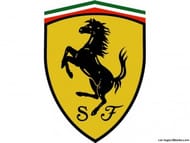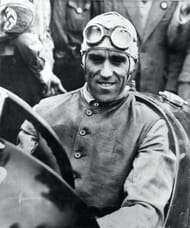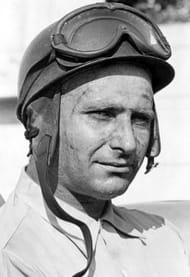Ferrari is a name which has now become synonymous with speed and glamour around the world. But for all this, credit goes to one man who had an ambition to build the fastest and most advanced cars in the world, Enzo Ferrari
Enzo Ferrari was born in Modena, Italy on February 18, 1898. When only 10 years old, he went to witness a local race called Circuit di Bologna, which completely mesmerized him. Throughout his life, he remained quite attached to his birthplace and spent a majority of his days there. He totally inhabited in his life the culture and the values with which he was brought up and never strayed away from it. His life was affected by the First World War, in which he along with his brother had to join the Italian army. This period had a grievous impact upon his life as he lost both his brother and father in a flu outbreak in Italy and also just nearly survived from the flu himself. After returning from the war, left with no employment opportunities, he sought after to fulfill his childhood ambition. Fascinated by cars and racing since his childhood, he landed a small job with CMN Car Company. Later on, he also raced for them, but did not garner much success.
By 1920, he left CMN and joined Alfa Romeo as a racer. He had driven in several races for Alfa Romeo, who had become impressed with his driving ability and were willing to give him a chance to drive at a higher level, but he declined the offer. This practically ended his racing career, and he then directed his attention towards managing racing teams.
After this, he continued to work with Alfa Romeo and managed their racing team. In 1929, he convinced Alfa Romeo to race under his name and formed his own racing team “Scuderia Ferrari”. During this time the trademark prancing horse logo was also adopted by him, he once described the reason for it -
“The horse was painted on the fuselage of the fighter plane of Francesco Baracca – a heroic airman of the First World War. In ’23 I met count Enrico Baracca, the hero’s father, and then his mother, Countess Paulina, who said to me one day, ‘Ferrari put my son’s prancing horse on your cars. It will bring you good luck’. The horse was, and still is, black, and I added the canary yellow background which is the color of Modena.”
He also got hold of several young drivers like Tazio Nouvlari and Giuseppe Campari. After humble beginnings, his team started winning races and dominating the racing arena for several years. But by the mid 1930s, several nations had understood the possibilities of utilizing motor racing as a means to showcase their supremacy. This marked the arrival of well funded and technically advanced German teams like Mercedes and Auto Union in the racing arena, which had assistance from the German Government. The German teams with their superior machinery, completely outshone everyone on the grid including Ferrari. During this time, one man who still kept the team competitive was his lead driver, Tazio Nouvlari. Even with inferior machinery when compared to the Germans, he still outpaced the capability of the car and came up with several fine performances. The most famous of which was the German Grand Prix in 1935, in which against all odds, he outclassed the Germans at their home.
Nouvlari is perhaps one of the greatest drivers in racing history. Enzo Ferrari first noticed his talent while racing alongside him on the grid in the 1920s. He admired his talent a lot and considered him to be an ideal racing driver. Nouvlari served as a benchmark to Ferrari and he always looked for qualities like him in other drivers. His heroics at the 1935 German Grand Prix served to Ferrari as a benchmark as to how a driver should drive in a race.
By 1937, Nouvlari left his team and joined Auto Union. Later, Ferrari was sacked from the team when Alfa Romeo retook control the same year. He spent the next few years selling parts to other racing teams and also built two cars of his own in 1940. But all his racing activities were abruptly stopped after the beginning of the Second World War, when he had to direct his factory to produce ammunition for the Italian army. There was no major racing activity until the war ended in 1945.
After the war, in 1947, he laid foundations for Ferrari S.p.A, which still exists today. In 1950, there were foundations of a championship, called Formula One, which was to crown World Champions each year. Ferrari enrolled his team for the inaugural season and since then it has competed in every season of Formula One. In 1951, Jose Froilan Gonzalez provided the first win for the team at the British Grand Prix in Silverstone.
Then Ferrari signed an experienced driver and a close friend, Alberto Ascari, who succeeded in winning the first championship title for the team in 1952 and also defended it the next year. Another championship was also won with the help of Juan Manuel Fangio in 1956. Ferrari continued to dominate in Formula 1 throughout the 1950s and its popularity further increased due to successful outings in Le Mans and Mille Miglia. During this time, aside from racing, he also entered the business of producing and selling sportscars, a business which has flourished since then and continues to be so till this day.
The 1950s and early 1960s brought a lot of success to Ferrari, but this was also the period when motor racing was extremely dangerous and it had almost become common for drivers to lose their lives. Ferrari’s team also did not remain untouched by this as during this period seven of Ferrari’s drivers lost their lives which also included his close friends, Alberto Ascari and Giuseppe Campari. Perhaps this was why he chose not to get too involved with his drivers. But the most painful moment for him during this time was the untimely death of his son Dino, the heir to the throne of Ferrari, who died due to muscular dystrophy at a mere 24 years of age in 1956.
The year 1958 brought further success to Ferrari in Formula One as Mike Hawthorn triumphed in winning the world title. This was followed by further championship successes in 1961 and 1964 with Phil Hill and John Surtees respectively.
Ferrari always believed that the car had a greater role to play in winning than the driver. It is also supposed that during accidents, he was more concerned with the condition of the car than that of the driver. As a boss and team principal, he was known to be ruthless to his team and drivers. In order to win, he did not hesitate in creating a conflicting environment between his drivers, so that they would push each other in the race and help bring victories to the team.
By the late 1950s, other teams and especially British teams like Cooper, BRM and Lotus started challenging Ferrari and dominating Formula One. Enzo Ferrari always believed in horsepower in a car, he hated the concept of aerodyanmics which was being utilized by the new teams. He believed “Aerodynamics are for people who can’t build engines”.
After 1964, for several years his team did not garner much success. In 1969, due to increasing expenses, he had to sell a 50 percent share of his team to the FIAT Motor Group, who allowed him to remain in operational command of the team. Since then, the FIAT Group has retained its control over Ferrari and now owns 85 percent shares of it (as of 2008).
In the early 1970s, he spotted a young Austrian driver Niki Lauda, who had signed with BRM in 1973. By 1974, he signed Lauda alongside the more experienced driver Clay Regazzoni. Lauda immediately showed his prowess and by the end of the season, provided another world championship to the team.
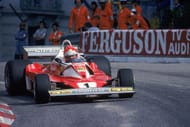
30 May 1976: Ferrari driver Niki Lauda in action during the Formula One Monaco Grand Prix in Monaco. \ Mandatory Credit: Tony Duffy /Allsport
The 1976 season is remembered mostly for the rivalry between Niki Lauda and James Hunt, in which Lauda returned to racing within a few weeks after a near fatal accident to challenge Hunt for the title. But this season also signaled a strain in the relationship between Lauda and Enzo Ferrari due to events at the Japanese Grand Prix, the last round of the season. It was raining heavily during the race, and Lauda was in contention for the championship, but he retired from the race due to safety concerns and thus eliminated all chances for Ferrari to win the title. This made Ferrari furious and this damage in their relationship was never undone. Despite this, Lauda stayed on with the team in 1977 and won another world championship, before departing in 1978.
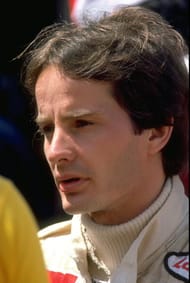
Apr 1980: Portrait of Scuderia Ferrari driver Gilles Villeneuve of Canada before a Formula One Grand Prix. \ Mandatory Credit: Steve Powell/Allsport
After Lauda left, Jody Sheckter helped Ferrari in winning another world title in 1979. This would be the last time during Ferrari’s lifetime that he would witness a driver win a world championship with his team. By this time, the highly regarded Canadian driver Gilles Villeneuve had also joined the team alongside Sheckter. Ferrari had spotted immense talent in him and found his driving to be similar to that of Nouvlari. He proved right in his potential, as Villeneuve had the talent to push and be competitive even in those cars which were no match against the others on the grid. In 1981, he was joined by another young driver, Didier Pironi. Both of them had the ability to lead the team towards another world championship, but their careers were abruptly ended the following year. In 1982, Villeneuve had a fatal accident during a practice session at Zolder, Belgium and Pironi’s legs were badly injured due to an accident at Hockenheim, Germany. After this, Enzo Ferrari’s team had moderate success during the 1980s.
Enzo Ferrari died in 1988 in his sleep. He did not live to see the glory which was to be attained by Michael Schumacher with his team in the future. But he has left behind a legacy which has been responsible for making Ferrari more than just a company but a phenomenon. Such has been the impact of Ferrari that even people who don’t know anything about automobiles, have heard the name of Ferrari. He is the one responsible for making Ferrari one of the most famous and beloved racing teams and car manufacturers in the whole world. The legacy which he has left behind is still growing and will continue to grow for numerous generations to come.
Credits
“Timewatch” The Secrets of Enzo Ferrari – BBC
www.grandprix.com
